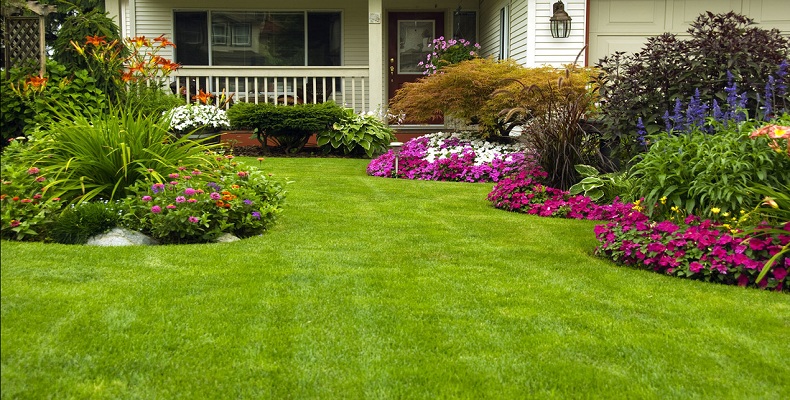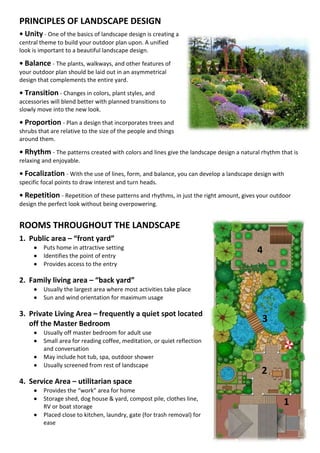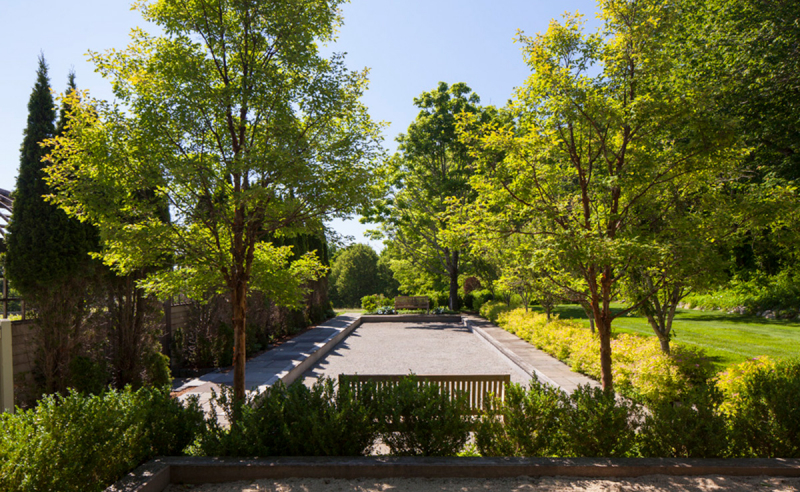The Definitive Guide to Landscape Design
The Definitive Guide to Landscape Design
Blog Article
The Greatest Guide To Landscape Design
Table of ContentsThe Of Landscape DesignLandscape Design Things To Know Before You Get ThisLandscape Design Things To Know Before You Get ThisThe Buzz on Landscape DesignLandscape Design Fundamentals Explained
A yard can generally be separated into three locations: public (the front lawn), exclusive (the back backyard), and service (normally the side backyard). The location of task areas depends largely on the kind of location, the dimension of room required, the kind of task, and the preferred distance to other activities and frameworks.The outdoors wall of your home typically acts as the first wall or beginning point of an exterior space. Inappropriate usages must be divided, and relevant activities, such as cooking and eating, need to be assembled to make the yard extra effective and enjoyable. When making use of hardscape to create areas, make use of building material similar to that used in the home for continuity from your home right into the yard.
Connected rooms. Credit Scores: Gail Hansen, UF/IFAS Using comparable hardscape features and duplicating plants draws the eye around the garden. Vital points along the road can be stressed with plantings or features that draw attention and urge activity in a certain direction. Moving along the path takes a person from one area to the next and permits the user to have a variety of experiences.
3 Simple Techniques For Landscape Design

For emotional convenience plants are used as physical or suggested obstacles for personal privacy and safety and security. Physical barriers block both the view and access to an area and consist of fences, wall surfaces and plant bushes. Implied obstacles, typically low growing plants, obstruct access but not the sight (Figure 9). Other functions of plants include cleaning up the air, protecting against disintegration and dirt loss, keeping wetness in the dirt, and returning organic issue to the soil.
Physical and indicated obstacles. Credit: Gail Hansen, UF/IFAS For these reasons, the kinds of plants to be made use of (such as trees, shrubs, or groundcovers) ought to be chosen in the onset of planning (Landscape Design). Plant types are picked for their useful capabilities to ensure that their future objective and required space can be thought about at the very same time

Landscape Design for Dummies
Each plant mass remains in front of, behind, or next to, one more mass. Number 11. Horizontal plant layers. Credit History: Gail Hansen, UF/IFAS Figure 12. Upright plant layers. Landscape Design. Credit: Gail Hansen, UF/IFAS Duplicating plants within a mass and duplicating masses with similar plants links the garden together. The specific plant features should be taken into consideration to efficiently layer and mass plants.
All plant compositions start with the primary structure plants, the large, primarily evergreen background plants-such as the trees and huge hedges. These plants separate or enframe spaces, manage the dimension of the space, and supply the starting point for selecting the suitable features of the second layer, midground plants, for massing and infill.
Essential factors in the yard should be highlighted by the use one-of-a-kind plants, unique frameworks, or garden accessories. Marking limits or entrances to areas can be done with entrances, arbors, and actions, or via using distinct and vivid plants. The form and/or design motif of the garden will usually help web link determine the crucial factors and how they ought to be highlighted.
Various other important locations in the backyard are focal factors, which is used to visually organize a designed location. Different point of views or viewpoints can reveal various make-ups in the landscape that might need a range of focal points.
What Does Landscape Design Mean?

Plant types. Credit: Gail Hansen, UF/IFAS After type, structure is the following dominant feature look at this website of a plant; coarse, medium and fine textures can be utilized for contrast and emphasis in the landscape.
The positive aroma of plants, the audio of wind in the trees, the sound and appearance of water, and the colors and appearances of sculptures, pots and garden furnishings all contribute to the experience of the garden. One detail that is frequently ignored is the effect of light on the looks of the plants.

The Best Strategy To Use For Landscape Design
It is essential to recognize the eventual mature dimension of plants so they can be put in the right location and spaced appropriately when they are mounted. Offering plants area to expand is a challenge because the common mature dimension is commonly based upon ideal expanding problems and the ecological problems of a site may cause a plant to enlarge or remain smaller sized.
Report this page